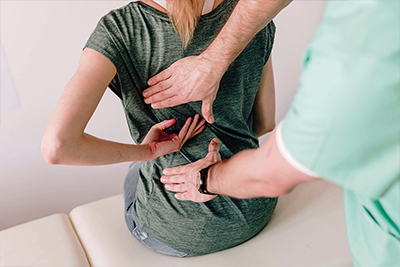Plantar fasciitis is a foot condition that can affect anyone. It is not life-threatening, but it can be extremely painful for those who have it. In the past, people who suffered with it would either have to go through surgery or deal with the pain. Today, there are more options available. One such option is shockwave therapy and there is growing evidence supporting this treatment.
What is Plantar Fasciitis?
Plantar fasciitis is a foot condition that is sometimes confused with heel spurs due to where pain is felt. Instead of being a growth directly on the heel bone, plantar fasciitis is actually the inflammation of the band of tissue that is found along the arch of the foot. Even though these two conditions are different, the majority of people who have plantar fasciitis also have a bone spur.
While it can be found every age group, plantar fasciitis is most commonly found in middle-aged men and women and those who have experienced rapid weight gain. Athletes also tend to have the condition due to the stress they put their bodies under. Specifically the plantar fascia. All of these factors lead to a weakening of the foot’s arch. This causes irritation and then inflammation.
People with plantar fasciitis state that the pain is the worst when they first stand up in the morning. Usually the pain does not last very long, but spending long hours walking or standing can cause the pain to return. The discomfort is relieved with rest.
What is Shockwave Therapy?
Shockwave therapy is used to promote the body’s natural healing response. It is a practice used in sports medicine, orthopaedic, physiotherapy, and urology. It helps healing by using high-energy acoustic waves that are pointed towards a painful location on a patient’s body. It is a non-invasive operation that works on sub-chronic, chronic, and subacute conditions. Those who have undergone shockwave therapy have noted that there is a feeling of pressure during the procedure, but for many there is no significant discomfort.
Treating Plantar Fasciitis with Shockwave Therapy
Unlike conventional methods of dealing with plantar fasciitis, shockwave therapy is able to treat a person’s pain more directly. The full title of the procedure is called ‘extracorporeal shockwave therapy for refractory plantar fasciitis’. Shockwaves are directed through the skin to the afflicted area using a specific device. Depending on how deep into the body tissue is, the use of additional ultrasound tools may also be required.
Your chiropractor will determine how many shockwave sessions a patient should have. How painful the plantar fasciitis is and how mobile someone is are just some of the factors that contribute to how long or how many shockwave therapy sessions a person should have. It is not uncommon for patients to choose to have the procedure done over multiple meetings.
Procedure Results
There have been multiple studies done on the effectiveness of using shockwave therapy to treat plantar fasciitis. One of these studies was done by an outpatient clinic in Saudi Arabia. The King Saud Hospital’s Physical Medicine & Rehabilitation department tested the procedure on 90 patients with plantar fasciitis. They had a good mix of middle-aged men and women that were asked to rate their pain on a scale of 1 to 10. They were then split into an active group and a control group. The active group received shock therapy with shocks that were comparable to what one would receive in a regular treatment. The control group was given a much lower, almost negligible, dosage.
The study was held over a few months with the patients receiving one shockwave session each week. At the end of the study the hospital found that the active group, which rated their pain at 7.8 on average, had it lowered to a 3.8. Some patients reported having their pain reduced by over 60%. The control group lowered their average pain of 7.8 to a 5.4.
Other procedures across the world have seen similar results. There is a significant drop in pain for those that choose to use shockwave therapy over those that do not. However, it should be noted that this option does not fully solve the problem of plantar fasciitis. It is a method to reduce pain and increase the body’s natural healing response, but it is not a permanent solution.
NICE (National Institute for Health and Clinical Excellence) recently evaluated shockwave therapy for heel pain. The recommendation was that the treatment is effective and should be offered, providing centres audit their results and inform patients of possible side-effects.
Risks of Shockwave Therapy
In a few of the studies done to test the results of shockwave therapy on plantar fasciitis there have been reports of abnormal amounts of pain and minor injuries. In general, 4 percent of people mentioned that they felt pain during the actual procedure. Another 10 percent said that after the event they had reddening skin or a throbbing sensation where the shockwave therapy took place. A very small percentage of patients saw swelling, bruising, or increased skin sensitivity around the site treated. These findings are three times more common than those found in control or placebo groups.
What Does This Mean for Me?
Doing research is one of the best things you can do when you are thinking about participating in a medical procedure. The next step should be to talk to a chiropractor. They will be able to use what they know about their field and your own medical conditions to see if treating your plantar fasciitis with shockwave therapy is the best option.
They will make sure you know the benefits and risks, and they will most likely provide you will additional sources of information to help you make the best decision.
Related Articles
- Shockwave Therapy FAQs
- Shockwave Therapy – Radial and Focus
- High Heels, Good or Bad?
- Runners Knee, a Recipe for a Pain-Free Knee
- Osgood Schlatter Treatment in Tunbridge Wells




























